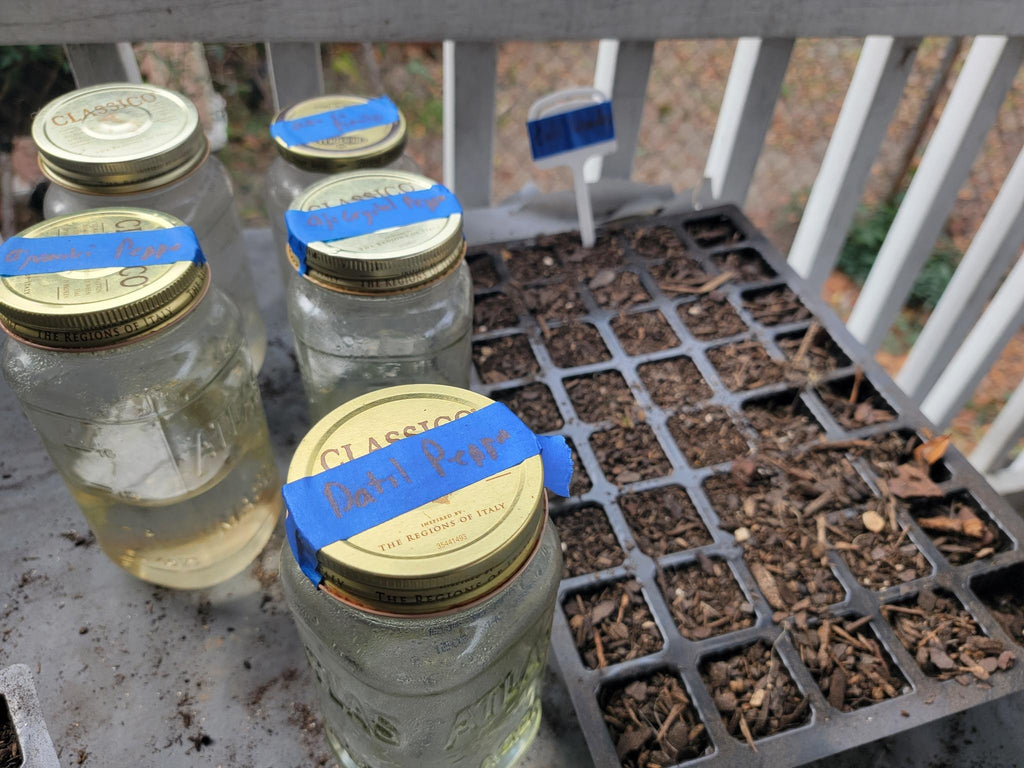
Most plants start with seeds—they’re the primary mechanism for reproduction in most plant species and they’re how many gardeners acquire new plants. Thus we’ve spent a lot of time paying attention to seeds: how to order them, how to start them, and how to share seeds with your friends and neighbors. So as we get closer to spring and the time to start seeds is upon us, let’s talk about a common and often discussed gardening practice. Soaking seeds before planting has been a hot topic in gardening circles for a while now, but many of us still have questions about it. Does soaking seeds work? Is soaking seeds before planting necessary? If so, how should I soak my seeds? While there’s a lot of back and forth about soaking seeds, the reality is that it’s not that complicated and while there are a few things to keep in mind, soaking seeds can help jump-start your garden and get things sprouting faster. Let’s dig in to soaking seeds and how it works.
Let’s start with a quick reminder of how seeds are structured. Most seeds have two major components: an external seed coat that forms the outer layer of the seed, and the internal embryo that contains the baby plant which grows from the seed under the right conditions. While there are a number of structures inside the seed, we’ll go into details about that in a later blog. Right now let’s focus our attention on the outer layer. The seed coat protects the seed until it’s time to grow, and as such it’s a fairly tough structure. Soaking the seed can help loosen the seed coat and tell the seed’s internal components that it’s time to grow, starting the sprouting process more quickly than just planting a dry seed in soil.
So now that we’ve reviewed how seeds work and how soaking seeds help them grown, let’s talk about how you can best soak seeds before planting them. In general, it’s pretty easy: find a container that can hold water securely (we like jars with tight fitting lids), add the seeds from the plant you want to start, pour lukewarm/room temperature water over the plant, close the lid of the container, and let it sit for eight to 24 hours. Drain the seeds carefully and plant as you would any other seeds—it’s that simple, at least in theory. In practice, there are a few tips and tricks for soaking seeds that we’ve learned along the way and these do make the process a bit easier:
- DO keep your seeds organized! Only soak one type of seed in each container, and label your soaking containers to avoid confusion. It’s hair-pullingly frustrating to forget which seeds are which and ending up with a bunch of mystery plants!

Labels help us stay organized all through the process
(pictured by Michael)
- DON’T soak your seeds in water that’s too hot or too cold. Both can damage your seeds and prevent sprouting, meaning that your seeds won’t grow into plants. Use water at room temperature, or water that is warm to the touch—if you cant’ comfortably stick your finger into the water, it’s too hot. Likewise, keep the water at the right temperature during the soaking process; keep your soaking seeds in a warm place while soaking.
- DO soak your seeds for the right amount of time. In general, seeds should be soaked for at least four to eight hours for best effect, and can soak for as long as 24 hours without harm. Over-soaking seeds can kill them and prevent sprouting. We recommend soaking seeds overnight; put them in the water before you go to bed and then drain and plant in the morning.
- DO be careful with small seeds! Tiny seeds like basil, eggplant, peppers, and the like can be easy to lose while soaking or draining. We’ve found that it’s best to use a smaller container for soaking and then drain them slowly onto a paper towel or coffee filter inside a bowl. This helps keep your seeds from wandering off, and helps you recover them if they do!

You can start seeds in many kinds of containers and trays. Just transplant when they get big enough!
(pictured by Michael)
- DON’T be afraid to experiment! While you should probably avoid experimenting with all your seeds, or with particularly expensive/rare varietals, trying different soaking methods, times, and planting techniques is part of learning about gardening. So set a few seeds aside and try something new; you may discover a better way of doing things!
Soaking seeds is a great way to get your plants sprouting and growing faster. This in turn can help you get your garden off the ground in the spring a bit more quickly, giving you more time over the season to enjoy the many pleasures of having a space of your own. So whether you’re starting seeds for a big outdoor garden or just adding a few plants to your windowsill, we hope soaking your seeds helps you this spring. If you have any tips or tricks of your own for soaking seeds, please share them with us; we love to hear from you!

Leave a comment